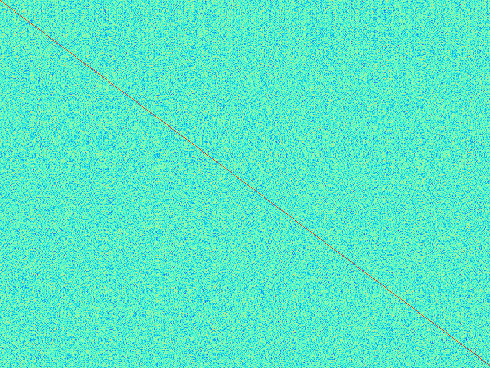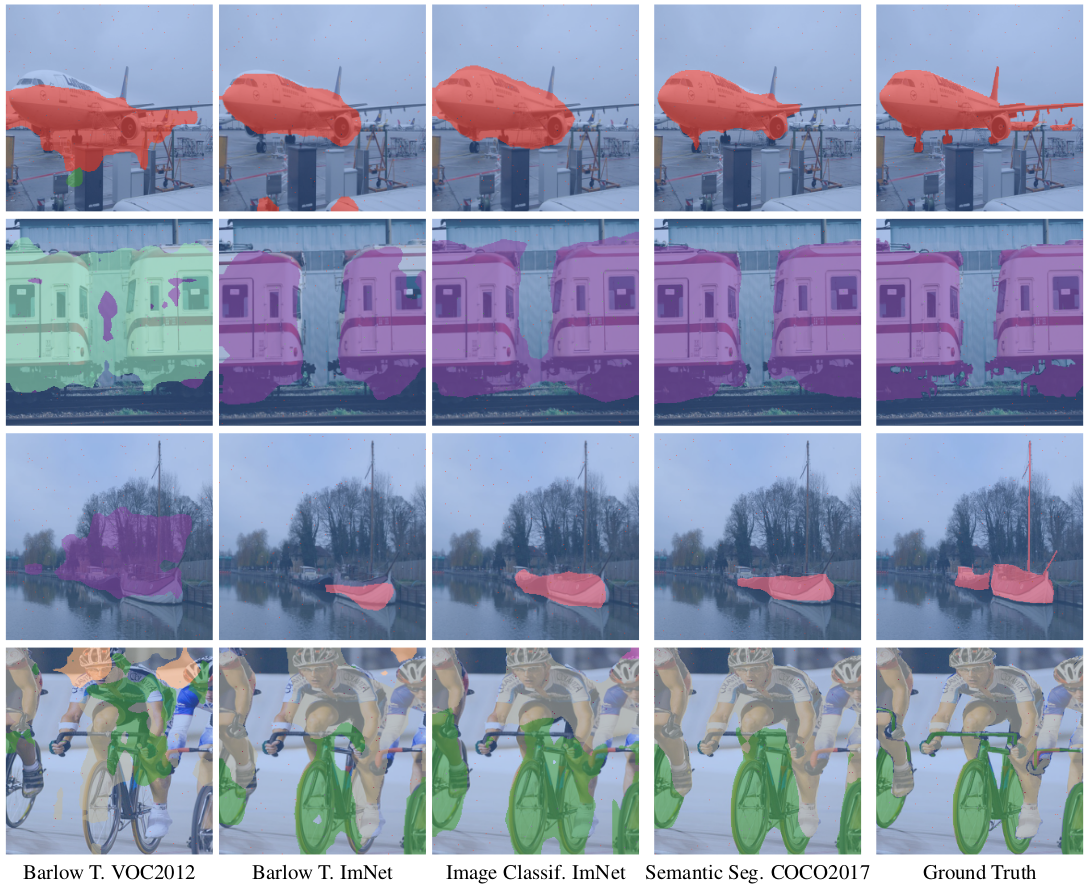Authors: Apavou Clément & Zucker Arthur
Self-supervised learning using transformers has shown interesting emerging properties and learn rich embeddings without annotations. Most recently, Barlow Twins proposed an elegant self-supervised learning technique using a ResNet-50 backbone which achieved competitive results when fine-tuned on downstream tasks. In this paper, we propose to study Vision Transformers trained using the Barlow Twins self-supervised method, and compare the results with. We demonstrate the effectiveness of the Barlow Twins method by showing that networks pretrained on the small PASCAL VOC 2012 dataset are able to generalize well while requiring less training and computing power than the DINO method. Finally, we propose to leverage self-supervised vision transformers and their semantically rich attention maps for semantic segmentation tasks.
 |
 |
|---|---|
| Dino pretrained attention maps with a patch size of 8. Credits to Apavou & Zucker | Dino pretrained attention maps with a patch size of 16. Credits to Apavou & Zucker |
"Effective receptive fields of 8 layers of the deeplabv3 architecture. Credits to Apavou & Zucker"
Cross correlation matrix obtained by training a ViT with Barlow Twins, initialized with DINO weights. Refer to brisk-valley-111 experiment. Credits to Apavou & Zucker
You can find the complete project report in the repository or click here. Our slides are also available here.
Ours experiments are available on wandb :
We exported the required packages in a requirement.txt file that can be used as follows :
pip install -r requirements.txt
Refer to the Barlow Twins Wiki and the Semantic Segmentation Wiki for more details
We implemented the global structure and the Barlow Twins method from scratch in PyTorch Lightning, our visualization of the attention maps is inspired from the official DINO repository. Our trainer module takes care of initializing the lightning module and the datamodule, both of which can be chosen in our configuration file (config/hparams.py). simple parsing package extracts and parses the configuration file and allows us to switch between the two tasks: Barlow Twins training and Semantic Segmentation fine-tuning. We used the very practical Weights & Biases (wandb) library to log all of our experiments.
We implemented two very efficient and easy-to use callbacks to visualize the effective receptive fields and the attention maps at train and validation time.
Examples are shown above. Both rely on pytorch hooks and provide more interpretation to the training. Both were implemented from scratch, and the visualization of the effective receptive fields is based on the theory from Understanding the Effective Receptive Field in Deep Convolutional Neural Networks.
We also logged the evolution of the cross-correlation matrix which is fare more interpretable than the value of the loss. As various training showed, a decreasing loss can have a cross-correlation matrix far from the identity. We used a heatmap to represent the empirical cross correlation matrix were values close to 1 are red and values close to zeros are cyan blue.
Our implementation relies on pytorch lightning, and thus requires its installation. We also use the rich library for nicer progress bars and the very handy wandb library to visualize our experiments.
We used the following implementations for the backbones and heads :
- DeepLabV3 from pytorch vision model
- ViT from pytorch image models
- ViT from vit-pytorch
- SETR adapted from setr-pytorch
In model/fix_tim/vision_transformer the vision transformer returns every token in the forward pass (while only the cls token is usually returned). We use this to obtain more features for the semantic segmentation task.






